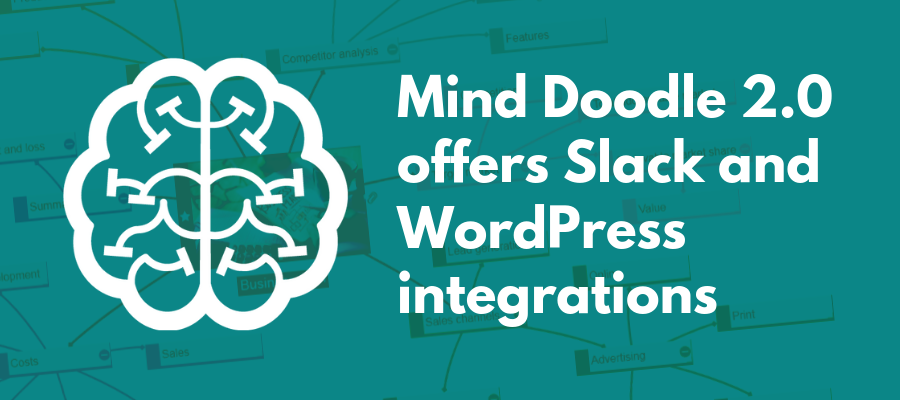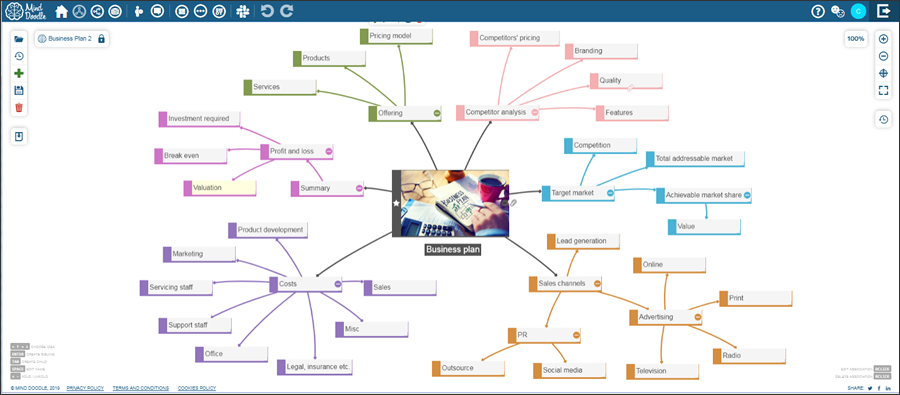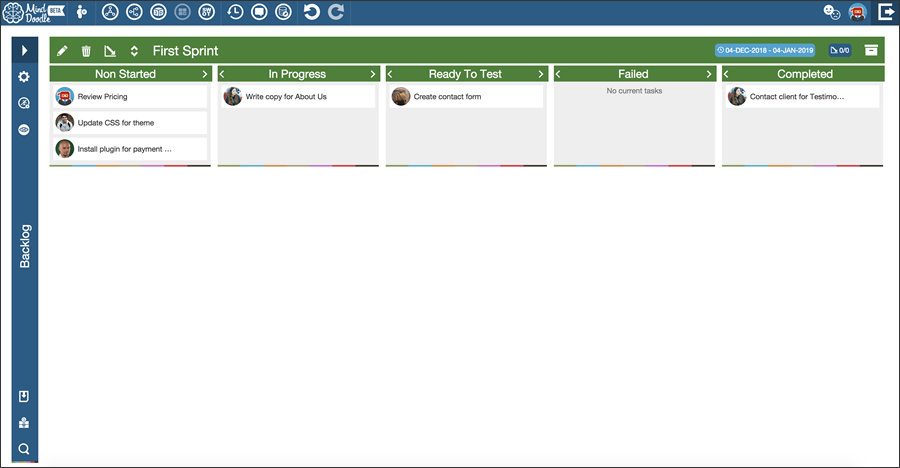Mind Doodle, a web-based mind mapping and task management tool, has come out of beta testing. Version 2.0 has evolved significantly since the last time we looked at it. Here’s what’s new:
New Slack integration
Mind Doodle now integrates with the popular team communication tool Slack. This capability enables instant messaging support between the two applications to streamline team communication. As part of the set-up process, you can select the channel in your Slack workspace that you’d like Mind Doodle messages to be posted to. Each idea in your Doodle has a separate chat thread within that channel. Each idea in your Doodle has a separate chat thread.
This Mind Doodle chat/Slack integration supports:
- Sending of media files to other members
- The use of tagging (@ commands) to instant message specific people on your Slack channel.
- The use of emojis, including keyword shortcuts for common ones
- Slack notifications about task updates.
Website mapping and task management via Mind Doodle
Mind Doodle version 2.0 offers a WordPress plug-in which connects some of the tool’s key features with WordPress. It can create a visual map of your site’s structure; when you edit your sitemap from WordPress or from Mind Doodle, it is updated across each platform in real-time. You can drag-and-drop pages to edit your site’s structure and rearrange the architecture of your site. In addition, you can create new web pages from within Mind Doodle, and can click an “edit” icon on any topic to open its corresponding page in WordPress. Very cool!
You can also manage the development of your website using Mind Doodle’s integrated task management agile board. You can access its agile task management tool from within WordPress. That means you can add tasks to it from your WordPress dashboard or directly from a post or page.
Expanded task management options
You can assign task types, assign tasks to team members and designate the type of idea a topic represents. You can also track estimated duration and actual time to date.
Something that’s unique about Mind Doodle is that you can assign story points to tasks. This is an abstract unit of measure that is applied to some agile projects. It represents an estimate of the overall effort that will be required to fully implement a product backlog item or any other piece of work. Story points are mainly used in software development.
Agile board
When you switch to agile view, all tasks are initially in the “backlog“ column. You can easily drag and drop them to the appropriate column that represents their current status in your process. You can also add tasks to ideas from within the agile board. Almost everything about agile view is configurable, including the number of columns and their names, task types and priorities and task colors.
Mind Doodle enables you to set up sprints within this view, including start and end dates, maximum work allocated (if desired) and designate whether the sprint is active or not. The new sprint will be added to your task board. Multiple sprints are displayed in chronological order based on the start and end dates chosen. You have four options to manage tasks within your sprints: priority, oldest, newest and custom criteria.
One innovative feature is the burndown chart, which graphically displays the number of remaining tasks to be completed versus the ideal trajectory for all of them to be completed by the end of the sprint. Finally, a workload report gives you a visual summary of each person assigned to the sprint and the amount of total estimated work versus work remaining. It will also show you which tasks are assigned to each person that don’t currently have time estimates.
Pricing
You can use the full functionality of Mind Doodle for free. A Gold Plan gives you unlimited chat and task history, plus generous data storage for only $10 per user per month.
Conclusion
Mind Doodle has added some fascinating functionality. Its integrations with WordPress and Slack make it truly unique. I applaud the ambition of the development team.
But I wish the application was a little easier to use. It’s easy enough to build out a mind map using this web-based tool. But when you need to access more details, such as links, attachments and task data, the map disappears from view. The details panel fills the screen, which makes it feel a bit disjointed and unintuitive.
 Despite the large size of the details screen, some text labels were rendered quite large on my laptop’s screen, while others were so small that they were unreadable – especially in the agile board view.
Despite the large size of the details screen, some text labels were rendered quite large on my laptop’s screen, while others were so small that they were unreadable – especially in the agile board view.
The initial view of the agile board is less than intuitive: 5 columns (6 if you include the task backlog), stacked in 2 rows, plus a “sprint” header. If you’re comfortable using kanban boards, this will all look very familiar. But if you’re not, you may be overwhelmed by all of the structural elements fighting for your attention.
All in all, Mind Doodle 2.0 is a decent mind mapping and visual task management tool. It’s just a little rough around the edges.




Leave a Reply